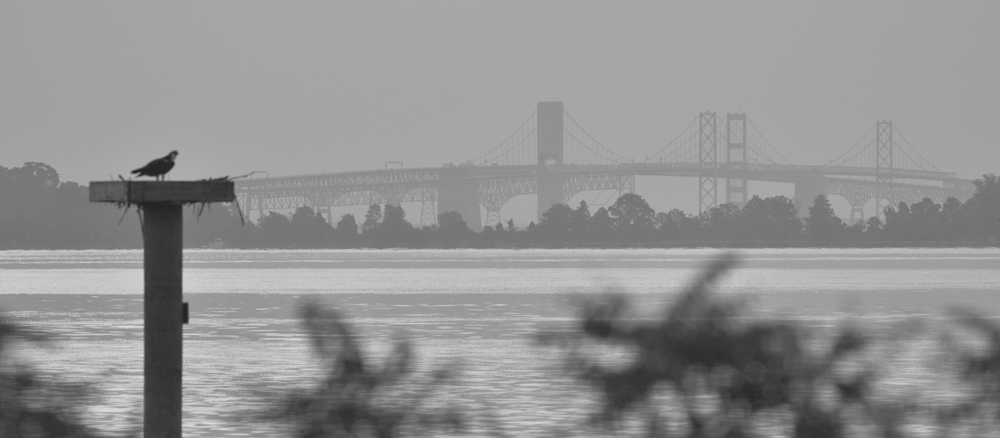I left the house shortly after sunrise to beat the heat, and it was a good idea. It got well into the 90s today. I was home shortly after 9:00.
I was surprised to find a goat compound along the trail, and to see thata number of new paths are now open due to some land clearing. They look very promising.
I was surrounded by Yellow Breasted Chats, as is usual at Greenbury.
Monthly Archives: July 2013
Osprey at Terrapin Nature Park
It looked like a promising morning despite the weatherman’s predictions of rain, so I headed for Terrapin, where I haven’t been lately. I was surprised to find that the Bay Bridge toll has been increased to $6.00, which was annoying.
I was also surprised to find two of the main paths at Terrapin blocked by downed trees. I assume they’ll fix that soon.
It was very humid, and buggy, and birds were in short supply. I watched the Terns fishing in the marsh pond for a while, then headed home early.
Eastern Phoebe at Wooton Wetlands Preserve.
Work and weather have conspired against me once again, but I did get out for a few hours over the last few days. The birding doldrums are on us, but here’s a few images that are passable.

This is Blackie, the abandoned cat we’ve adopted. She stays outdoors, but drops by for a daily meal.


I had ID’d this as a Monarch, but the experts tell me it’s a Viceroy.
Wikipeida:”The Viceroy (Limenitis archippus) is a North American butterfly with a range from the Northwest Territories along the eastern edges of the Cascade Range and Sierra Nevada mountains, southwards into central Mexico.
Its wings feature an orange and black pattern, and over most of its range it is a Müllerian mimic[1] with the Monarch butterfly (Danaus plexippus). The viceroy’s wingspan is between 53 and 81 mm.[2] It can be distinguished from the Monarch by its smaller size and the postmedian black line that runs across the veins on the hindwing.[2″

“The Eastern Phoebe is a small passerine bird. This tyrant flycatcher breeds in eastern North America, although its normal range does not include the southeastern coastal USA. It is migratory, wintering in the southernmost USA and Central America. “
Painted Bunting on the WBA Trail.
Cedar Waxwing at Wooton Wetlands preserve.
Common Yellowthroat Warbler at Governor Bridge Natural Area.
The day looked iffy when I awoke, but the Sun was shining a little around 6:00, so I took a chance and headed out.
It wasn’t a spectacular day, but I found a few birds in good light.


I heard this Common Yellowthroat Warbler singing, and knew he was quite close, but it still took a few minutes to locate him.

































































